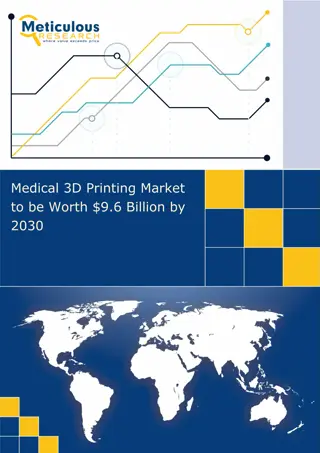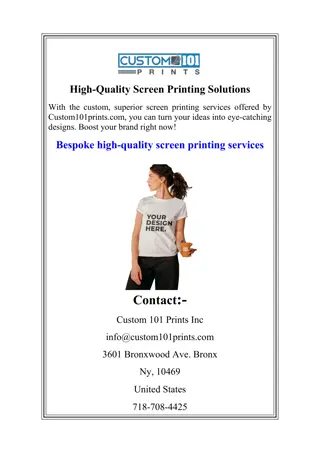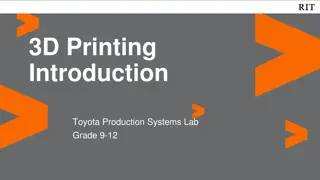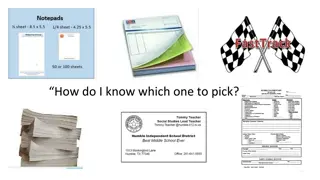Understanding Different Types of Paper for Printing
Explore various types of paper used in printing, including Bond paper for letterheads, Parchment paper for its water resistance, Onionskin paper for carbon copies, and more. Learn about the characteristics and uses of each paper type to make informed choices for your printing needs.
Download Presentation

Please find below an Image/Link to download the presentation.
The content on the website is provided AS IS for your information and personal use only. It may not be sold, licensed, or shared on other websites without obtaining consent from the author. Download presentation by click this link. If you encounter any issues during the download, it is possible that the publisher has removed the file from their server.
E N D
Presentation Transcript
EDPM Level 2
Stationery Area of focus: Types of paper Paper Sizes Paper layout
Types of paper Bond paper Parchment paper Onionskin Flimsy paper Carbon paper No carbon required (NCR) paper Document cover Stencil Copier paper or laser paper Letter sized and legal-size paper Indexed paper Customized paper
Bond paper Bond paper is a thick, high-quality paper used for printing letterheads and other printing purposes. Bond Paper was previously used for printing bonds and stock certificates Bond papers are identified by a gloss finish or watermark Bond paper is available in a variety of colors
Parchment paper Parchment paper is grease-proof and water-resistant. Parchment is heavy, expensive, high-quality paper. Originally made from goatskin and or other animals Available in vegetable parchment (Cheaper)
Onionskin Paper Onion skin paper is a lightweight, bond-type paper that is thin and semi- transparent. Ideal for making carbon copy
Flimsy Paper Thin, low-quality paper Used for printing unimportant work, multiple copies and drafts
Carbon Paper Lightweight paper Free of pinholes Waxy coating Used for making duplicate copies with impact printers or typewriters
No Carbon Required (NCR)Paper Chemically treated to allow copies to be made of the second and subsequent sheets without the use of carbon. Used with impact printers for making multiple copies of invoices and forms
Document cover Fairly heavy plain or embellished paper Used for making: Book covers Catalogs Brochures Pamphlets Has good folding qualities, printable, and durable
Stencil Strong Thin coated sheet of paper Used with Risograph printers to produce hundreds or thousands of copies of a page
Copier paper or Laser paper Light weight Good Quality Used for copying correspondence and documents Commonly known sizes: Letter sized 216 mm *279 mm (8 *11 ) Legal size 216 mm * 356 mm (8 * 14 )
Indexed paper Stiff Relatively Inexpensive Smooth Finish Usually, used for printing business cards
Customized paper Cut to size specified by the user
Paper Size International Organization for standardization (ISO) A series is the most used system for papers. Largest Size paper is A0 Smallest size paper is A9 Most used paper size is A4 Each size paper is half the size of the previous paper E.g.: A1 is half the size of A0
Paper Size ISA Paper size
Paper Layout Portrait and Landscape Portrait orientation refers to the vertical design or layout of an image, document, or device. E.G: letters, memos, and other text-based documents is taller. In a Portrait Orientation the shorter sides are at the top and bottom Landscape is a horizontal orientation mode used to display wide-screen content. E.G Web page, image, document or text. Landscape mode accommodates content that would otherwise be lost when viewed to the left or right In a Landscape orientation the shorter sides are at the left and right.























